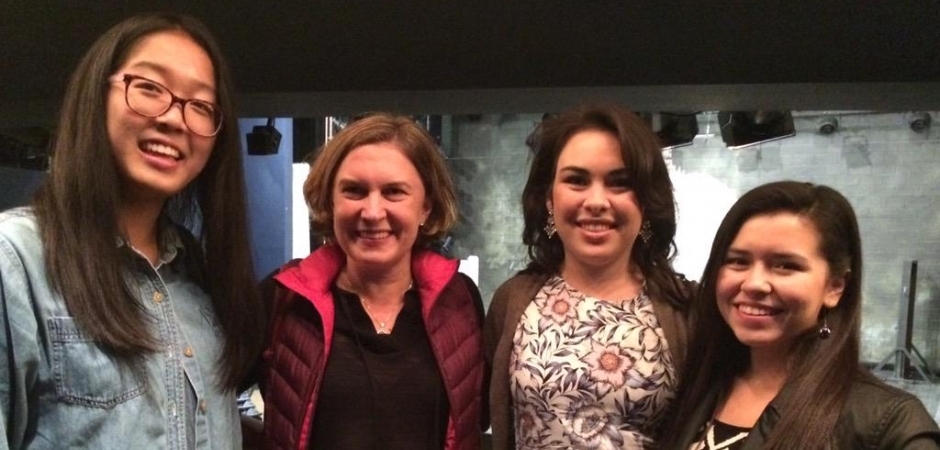by Noel Xie (IAC)
One need not to have ever seen an actual telenovela to understand this theatrical parody. Destiny of Desire was my first experience seeing “low-art” television translated into “high-art” theater, not to mention the all-Latino cast and production crew.
Traditionally, film takes its cues from theater, much like photography takes its’ from paintings. Chuck Close infamously reversed this process and created paintings that imitated photography. Karen Zacarías seems to have done a similar inversion with this telenovela-inspired play. New technologies and methodologies in art have yet to supersede their predecessors, so long as they do not stay static. This dynamic, turbulent dramedy is anything but.
From the beginning of the show, the actors lounge about the stage as actors preparing for their roles, reminding us that this is a play within a play. We do not forget this fact throughout its entirety. Henceforth, we suspend all disbelief. Actors play their stereotypes and tropes with an unbridled relish and enthusiasm, imbuing the performance with the surreal energy and passion it requires. The story starts thunderously with a “dark and stormy night” (there are an additional two more to follow) and babies switched at birth. Ensuing consequences are a frenetic blur of lust, murder, deceit, hidden identities, and crazy plot twists. At key plot points where the drama reaches a fever-pitch (often) and the dominating reaction feels like a “Wait, WHAT?!,” the characters “rewind” their movements. During a chance encounter, one of the two main couples have a meet-cute and desperately, madly fall-in-love-at-first-sight, passionately locking eyes while the other background characters move across the stage in slow-motion. How many times have we seen this exact scene play out on screen?
This select troupe of actors actively and fluidly uphold the artifice. They oh-so-visibly punctuate scenes and move props with fanciful choreographed flourishes of the arms and wrists. When not in character, they linger unconcealed at the fringes of the central action. The actress who played Pilar loudly cheered during Sebastian’s impressive solo. At one point, the piano man gets a shout-out and stands up to make his presence known. Some of the main actors play multiple other minor roles. The costumes are perfect paradigms of the stereotypes who wear them. Flamboyant Fabiola sports an array of glittering garishness: silky fabrics, leopard print, and neon red. Seductive stud Sebastian wears a button up that is never quite buttoned-up. Ernesto and Hortensia, the impoverished family, embody their worn out denim, neutral garb, and bandana. The maid outfit is a Halloween costume caricature.
Spot-lit statistics said with deadpan delivery, ranging from the light-heartedly humorous to the serious and tragic, sharply contrast with the momentum on stage. At times, the facts seemed too proselytizing, only made digestible by the accompanying laughter.
Horsentia admonishes a police officer for calling Pilar a “whore,” reminding him that she could be his sister or his mother. The chastised cop gives an ashamed apology. Zacarías subtly brings up hard questions, challenging our expectations and assumptions, by exaggerating or subverting them entirely, often to comedic effect.
A predominantly white and older audience is no surprise, but I feel disappointed that this particular work is not more accessible to my generation. This play has incredible relevance for those who consume telenovelas (or its multifarious forms in all kinds of popular media) for illusionary distraction. As one of the informational facts stated, the telenovela is the most popular form of entertainment on the planet. Art is often self-referencing, an aspect that may escape a casual onlooker of the art world. Artistic mediums can engage with each other.
This ridiculous and ridiculing, riveting, high-intensity, provoking clash between “high-culture” theater and “low-culture” television has a unique appeal. Although Destiny of Desire does not stray far from its palatably political message, it’s delivered in an innovative way that pushes the boundaries of its genre. That’s always a good thing, in my opinion.
Destiny of Desire was performed at Arena Stage from September 11 to October 18th as part of the Women’s Voices Theatre Festival.


